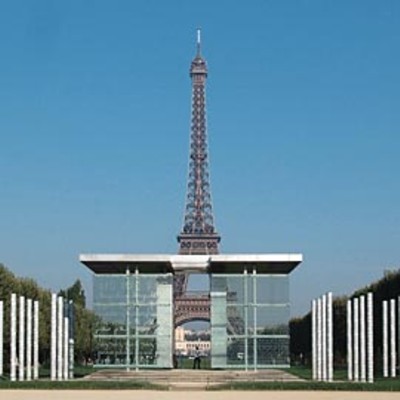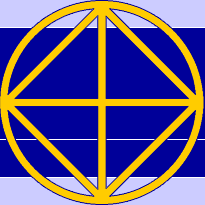A Culture of Peace
Today I got the Newsletter of the Culture of Peace Initiative (CPI) reminding of the “International Day of Peace” today, 21st September, which I would like to share:
This year thousands of organizations (local and global) are holding tens of thousands of events for the International Day of Peace, involving hundreds of millions of people – teaching, serving, praying, working, celebrating, helping and more. Some events will continue until Oct. 2nd the International Day of Non-Violence (Gandhi’s birthday); and some have been going on since Sept. 11th.
There are many ways to observe peace: government and security; education and media; economics and business; health and relationships; religion and spiritual teachings; environment and habitat; personal and cultural; science and technology. The United Nations urged people around the world to make their voices heard to strengthen peace and democracy. UN Secretary-General, Ban Ki-moon called on individuals to speak out for social justice, the rule of law, and the right to a say in one’s own future.
We remind people of our three guiding principles: Peace inside – find and act from a state of peace within ourselves; Peace outside – engage in practical acts of peace for the good of others; and Peace year round – commit to an ongoing peacebuilding practice. Together we are helping humanity to create a worldwide culture of peace.

Mur de la Paix
The Mur de la Paix (Wall of Peace) is a monument in Paris built in 2000 on the southern part of the Champ de Mars. It consists of twelve glass panels where the word PEACE is written in 32 languages and 13 alphabets. It is 16m long, 13m wide and 9m high.
The location has a high symbolic value. In the past each village in France used to have a Champ de Mars, a large field dedicated to the Roman God of War and used for military exercises as well as local fairs and festivals. So the wall of peace is on the field of the God of War.
You can leave there a personal message of peace or digitally post a message on the site of the Mur pour la Paix and see it displayed on the monument.
The newsletter ends with the words: “We look forward to a future that holds more peace, for more and more people; and we leave you with messages of peace from around the world.
Here is the word “Peace” in 130 languages:
Peace, English
Paz, Spanish, Portuguese
Paix, French
Pace, Italian, Romanian
Friede, German
Mír, Russian, Bosnian, Bulgarian, Croatian, Czech, Serbian, Slovene, Ukrainian
Shalom, Hebrew
Salam, Arabic
Heiwa, Japanese
Pingan, Chinese
Shanti, Hindi, Bengali, Gujarati, Kannada, Telugu
Amaní, Swahili
Alaáfía, Yoruba
Achukma, Choctaw
Amaithi, Tamil
Aman Malay, Urdu
Amniat, Pashto
Anachemowegan, Mohecan
Ashtee, Farsi
Asomdwee, Twi-Akan
Bake, Basque
Barish, Turkish
Béke, Hungarian
Boóto, Mongo-Nkundu
Búdech, Palauan
Chibanda, Ila
Däilama, Sa’a
Damai, Indonesian
Diakatra, Maranao
Dodolimdag, Papago/Pima
Echnahcaton, Munsterian
Emirembe, Ugandan
Ets’a’an Olal, Maya
‘Éyewi, Nez Perce
Fandriampahalemana, Malgache
Filemu, Samoan
Fois, Scots, Gaelic
Fred, Danish, Norwegian, Swedish
Friður, Icelandic
Goom-jigi, Buli
Gúnnammwey, Carolinian
Hasîtî, Kurdish
Hau, Tahitian
Hedd, Welsh
Hmethó, Otomi
Hoa Bình, Vietnamese
Ilifayka, Koasati
Innaihtsi’iyi, Blackfoot
Iri’ni, Greek
Írq, Amharic
Kagiso, Setswana
Kalilíntad, Magindanaon
Kapayapaan, Tagalog, Filipino
K’é, Navajo
Kev, Thajyeeb Nyab Xeeb, Hmong Daw
Khanhaghutyun, Armenian
Khotso, Sesotho
Kiñuiñak, Northwest Alaska Inupiat Inuktitut
Kiba-kiba, Rapanui
Kunammwey, Chuuk
Kupia Kumi, Laka Miskito
Kutula, Fanagolo
‘Kwam, Sa Lao
La Paqe, Albanian
La Patz, Aranés
La Pau, Catalán
Lapé Haitian, Creole
Layéni, Zapoteco
Li-k’ei, Tlingit
Linew, Manobo
Lùmana, Hausa
Kapayapaan, Tagalog
Maluhia, Hawaiian
Meleilei, Ponapean
Melino, Tongan
Miers, Latvian
Mina, Wintu
Mtendere, Chewa, Nyanja
Muka-muka, Ekari
Musango, Duala
Mutenden, Bemba
Nabad -Da, Somali
Nagaya, Ethiopian
Nanna Ayya, Chickasaw
Ñerane’i, Guaraní
Nimuhóre, Ruanda
Nirudho, Pali
Nye, Ntomba
Olakamigenoka, Abenaqui
Paçi, Maltese
Pardamean, Indonesia
Paco, Esperanto
Pax, Latin
Pokój, Polish, Slovak
Pyong’hwa, Korean
Rahu, Estonian
Rangima’arie, Maori
Rauha, Finnish
Rerdamaian, Indonesian
Rukun, Javanese
Saanti, Nepali
Sai Gaai Òh, Pìhng Yue
Salama, Swahili
Santipap, Thai
Saq, Uighur
Shîte, Tibetan
Sholim, Yiddish
Síocháin, Irish
Sìth, Gaelic
Soksang, Khmer
Solh Dari, Persian
Sonqo, Tiaykuy, Quechua
Sulh, Turkish, Afghan
Taika, Lithuanian
Tecócatú, Nhengatu
Thayu, Gikuyu, Kenyan
Tsumukikatu, Comanche
Tuktuquil, Usilal Kékchí
Tutkiun, North Alaska Inuktitut
Udo, Igbo
Ukuthula, Zulu
Uvchin, Mapudungun
Uxolo, Xhosa
Vrede, Afrikaans, Dutch
Wâki Ijiwebis-I, Algonquin
Wetaskiwin, Cree
Wolakota, Lakhota
Wôntôkóde, Micmac
Wo’okeyeh, Sioux
Zhi-bde, Tibetan
See also the UNESCO-site on the Culture of Peace. The Manifesto 2000 for a Culture of Peace and Non-Violence is also on the Good-Will website.


